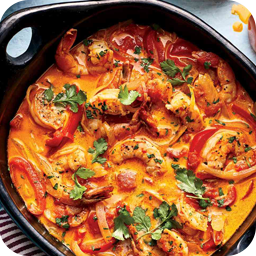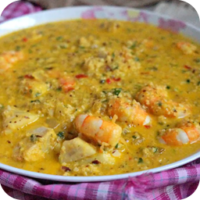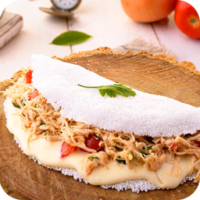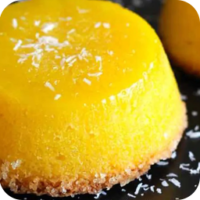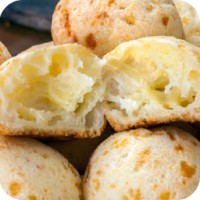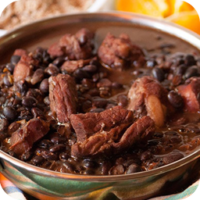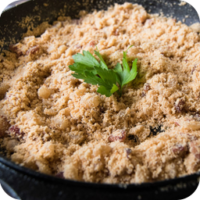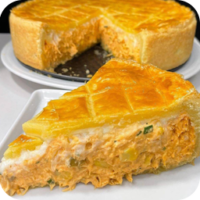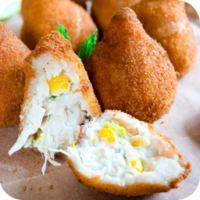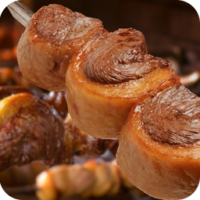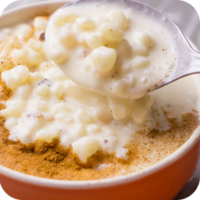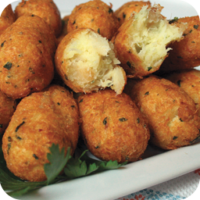Moqueca is a traditional Brazilian seafood stew, primarily associated with the states of Bahia and Espírito Santo. It is made with fish or shrimp, cooked in a rich and flavorful broth with ingredients such as coconut milk, palm oil, tomatoes, onions, and cilantro. The dish is typically served with rice and farofa (toasted cassava flour), making it a hearty and satisfying meal.
There are two main regional variations of moqueca: the Bahian version (Moqueca Baiana) and the Espírito Santo version (Moqueca Capixaba), with each having slight differences in ingredients and preparation.
Key Features of Moqueca:
- Main Ingredients:
- Fish: Commonly white fish like snapper, grouper, or cod, though shrimp or other seafood can also be used.
- Coconut Milk: Adds creaminess and a mild sweetness to the broth.
- Palm Oil: A key ingredient in the Bahian version, which imparts a distinct flavor and vibrant orange color to the dish.
- Vegetables: Tomatoes, onions, bell peppers, and garlic are commonly used in the base of the stew.
- Cilantro and Lime: Fresh cilantro and lime juice provide a burst of freshness and acidity.
- Dende Oil: In the Bahian version, this oil made from palm nuts is used for cooking and adding flavor.
- Preparation:
- The fish and vegetables are layered in a pot and cooked together, typically in a clay pot or heavy pan.
- The ingredients are simmered with coconut milk, palm oil (for the Bahian version), and seasoning to create a flavorful and aromatic broth.
- The stew is often cooked slowly to allow the flavors to meld together.
- Serving:
- Moqueca is typically served with rice and farofa (toasted cassava flour), but it can also be accompanied by salad or plantains for additional flavor.
- It is often garnished with fresh cilantro and served with slices of lime.
Regional Variations:
- Moqueca Baiana (Bahian Moqueca): This version uses dendê oil (palm oil), coconut milk, and spices like chilies, resulting in a vibrant, rich, and spicy stew.
- Moqueca Capixaba (Espírito Santo Moqueca): The Espírito Santo version omits the dendê oil and coconut milk, instead using olive oil and a lighter broth. It is typically less spicy and features a more subtle, herby flavor.
Cultural Significance:
- Afro-Brazilian Influence: Moqueca has African roots, especially in the Bahian version, influenced by African culinary traditions, including the use of palm oil.
- Popular Dish: It is a beloved dish in coastal Brazil, often served during holidays, family gatherings, or special occasions.
- Symbol of Brazilian Cuisine: Moqueca is a signature dish of Brazilian coastal cuisine and showcases the country’s abundance of fresh seafood and tropical ingredients.
Nutritional Value:
Moqueca is rich in protein from the seafood, healthy fats from the coconut milk and palm oil, and provides a good balance of vitamins and minerals from the vegetables and herbs. The dish is typically low in carbohydrates when served without rice or farofa, making it a great option for a protein-packed meal.
Fun Fact:
- Moqueca has roots in indigenous Brazilian cooking but was significantly influenced by African and Portuguese cultures during Brazil’s colonial period.
- The dish is often cooked and served in a clay pot, which helps to retain heat and adds to the dish’s rustic and authentic appeal.
Summary:
Moqueca is a rich, flavorful Brazilian seafood stew made with fish, shrimp, or other seafood, simmered in coconut milk, palm oil, and a blend of fresh vegetables and spices. Whether in its spicy Bahian version or the lighter Espírito Santo style, it remains one of Brazil’s most iconic and beloved dishes.

